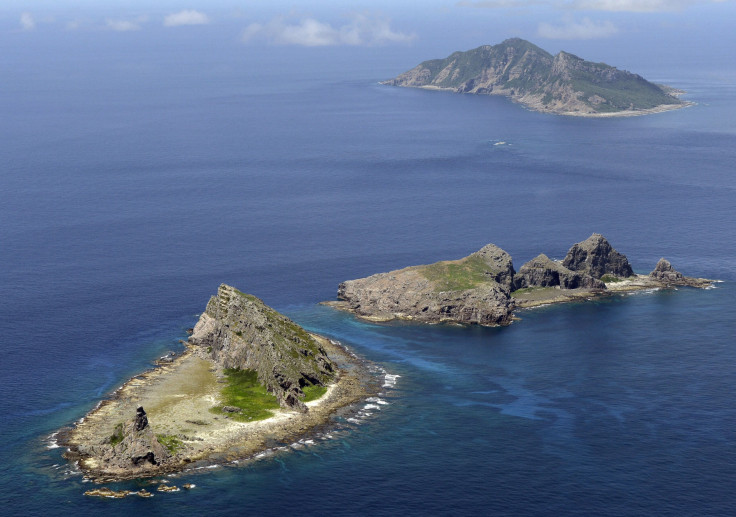East China Sea Tensions: Japan Coast Guard Blocks Chinese Ships Near Disputed Islands
Called the Senkaku Islands by Japan and known in China as the Diaoyu Islands, the little rocky chain in the East China Sea is claimed by both countries. The latest scuffle is over some Chinese Coast Guard (CCG) ships that Japanese Coast Guard (JCG) vessels have blocked.
Tokyo authorities said Monday (July 6) that the reason for the blockade is to keep them away from some Japanese fishing boats. Considering China’s track record of ramming fishing boats in the South China Sea, the move may be justified by that alone.
There are other justifications as well. The internationally recognized limit that defines territorial claims is 12 miles (19.3 kilometers) off the shore of the claimant country. The Chinese vessels intruded to within 2.5 miles (4 km.) according to the JCG.
The friction between China and Japan over the islands stems in part from these important events:
- In January of 1895, during the First Sino-Japanese War, Japan incorporated the islands under the administration of Okinawa under the Treaty of Shimonoseki.
- That treaty was superseded in 1945 by the Treaty of San Francisco, which was signed between Japan and part of the Allied Powers in 1951 after Japan lost the Second World War.
- A 1969 United Nations report said that a large oil and gas reserve may exist under the seabed near the islands piquing interest in the uninhabited rocky crags.
- Since the 1945 Treaty of S.F, the administration of the islands was left to the United States as part of the island chain that included Okinawa. The 1971 Okinawa Reversion Agreement was an agreement between Japan and the United States, in which the U.S. relinquished to Japan all rights and interests under Article III of the Treaty of S.F.
- Also, in 1971, China filed a formal protest of the Okinawa Reversion Agreement over the U.S. transfer of control to Japan.
- In 1972, the United States ended its occupation of Okinawa and the Ryukyu Island chain, which included the Senkaku Island, leaving China and Japan to arrive at a solution. Japan continues to administer the islands.
Last month, the Okinawa city council approved a bill changing the administrative status of the island chain. The bill was reported to have asserted that the islands are "part of Japanese territory."
On Monday, Chinese Foreign Ministry spokesperson Zhao Lijian responded that it was China's inherent right to patrol waters around the islands. Beijing urged Japan to stop infringing upon the country's sovereignty.
The fear is that a worst-case scenario involving a collision could ramp up into a military confrontation that would compel the U.S. to become involved under the mutual defense pact it signed with Tokyo. Terms of the pact are that the U.S. is obligated to defend the islands as part of Japanese territory.
There is some speculation that emerging Japanese defense ties with India are adding to the tensions between Tokyo and Beijing considering the recent face-off between India and China at a shared border near the Himalayas.
Japanese Defense Minister Taro Kono said in a news conference in June, "China is trying to change the status quo at the India border, in Hong Kong and in the East China Sea, South China sea. So, it is easy to make connections between those issues. Obviously, the military is controlled by the Communist Party, so it has to be coming from pretty high up in the Chinese Communist Party."
It remains to be seen if the scuffle over the Senkaku Islands is an attempt to merely reclaim a national birthright or part of a larger plan.

© Copyright IBTimes 2024. All rights reserved.





















